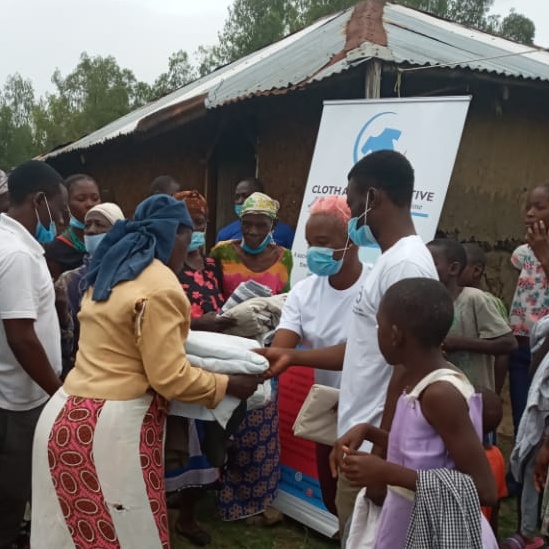One afternoon in early 2020, while having a lazy rest in her house, Irene Olwande took out her children’s suitcases, and decided to arrange the cloths.
She discovered that the children had overgrown a number of the cloths.
“I took a picture of some of the cloths and posted in social media, and asked anybody who would be interested in them to contact me. I knew I would not get a baby any soon, and these cloths were nolonger needed in the house,” she said.
Within minutes, her inbox was full of messages of people wanting to have the cloths. She made arrangements and got in touch with the beneficiaries, and distributed them, but the requests continued to come.
She had no more cloths to give to the huge number of requests.
Friends and relatives
Irene shared the same with friends and relatives who donated more cloths, but these too could not quench the thirst of the overwhelming requests.
“I went back to my Facebook page, and reported the overwhelming requests I was getting, asking those who had any children clothing they were not using to donate,” said Olwande.
More cloths came, and more requests came too.
Before she knew it, the cycle became part of her life, and Irene begun to give more attention to the initiative.
With many people narrating how helpful the initiative had been to them, Irene got more engaged in the initiative.

Covid-19
Covid-19 was just setting in, and many people had been hit economically to the point of struggling to put food on the table, leave alone clothing.
“My parents, and friends came through, and encouraged me to take this initiative more serious, and I did not want to disappoint them,” said Irene.
It was then that the mother of two begun to formalize the initiative, registering a Community Based Organization, Cloth A Child Initiative, in a bid to streamline the project.
The initiative has since borne fruits, with hundreds of vulnerable families always checking with her for cloths.
“It is good that we are now killing two birds with one stone. As we collect cloths from those who nolonger use them, we are helping with disposal menace as people have been throwing their unwanted cloths anyhow, and at the same time we cloth those who cannot manage to buy cloths given their strenuous economic statuses,” she said.
Her vision is to grow the initiative and expand it across the country to ensure that the vulnerable children get decent clothing.
“I feel this is where my heart is now, and I enjoy every bit of it,” the trained journalist said.

Irene the journalist
After sitting her Kenya Certificate of Secondary Education (KCSE) examinations in 2012, Irene enrolled for a Bachelor Degree course in Media and Communication at Maseno University a year later.
“My dad was working in the media, so he groomed me into this field, so immediately I joined campus, he encouraged me to begin writing, which saw me get internships while I was just a second year,” she said.
In 2016, she joined a weekly newspaper, as a correspondent based in Kisumu.
Later in 2019, she moved to a local Dholuo radio station where she worked as a Social Media Manager.
She later quit and begun private practice, concentrating on media consultancies.
And with her family growing, and the pressure to balance work and young motherhood, Irene took a break from active practice.
It was during this period that she got interest in clothing vulnerable children, an initiative she is now fully focused on, and has become her new source of happiness.
As she cloths the vulnerable families, Irene is saving the environment by providing safe space for disposing cloths nolonger in use, but still in good condition to provide dignity to the needy.
“I know I am still in media, but for now, my focus is to maximize the happiness I get from this new found initiative,” she said.
